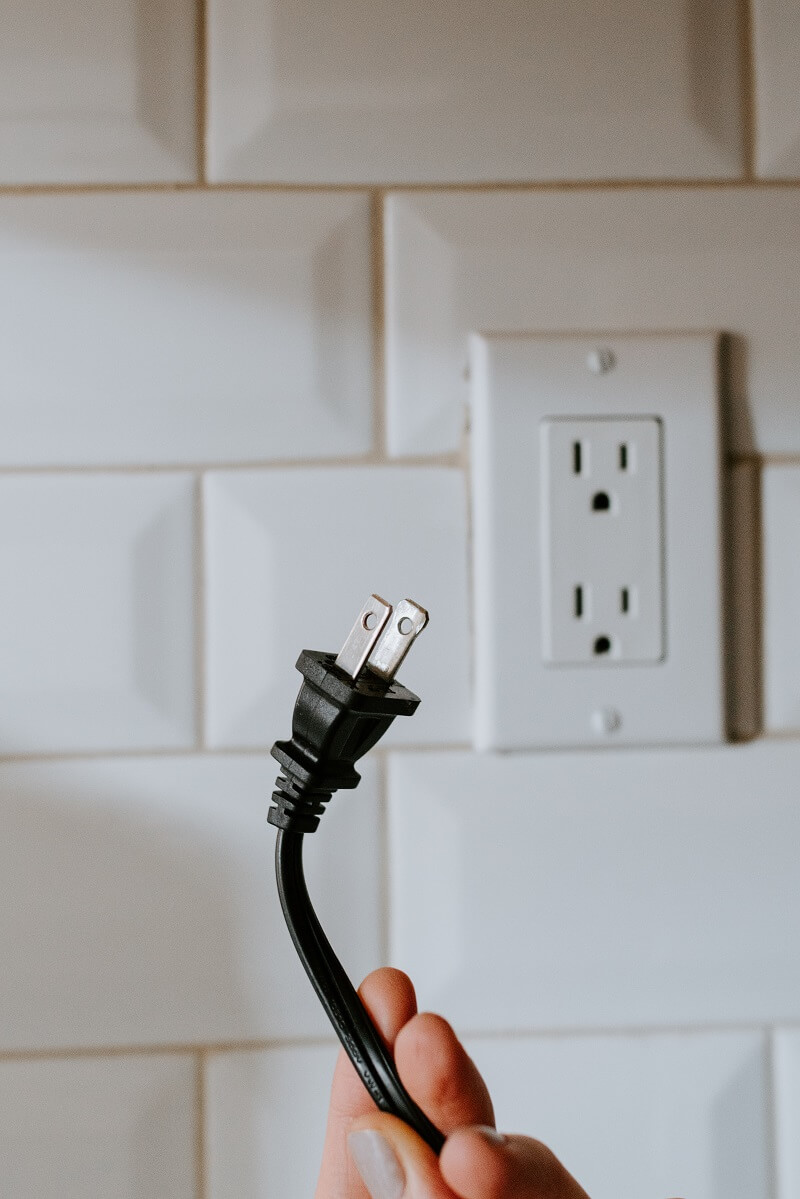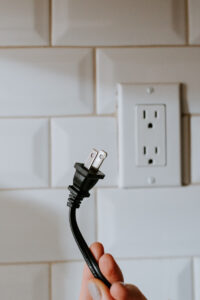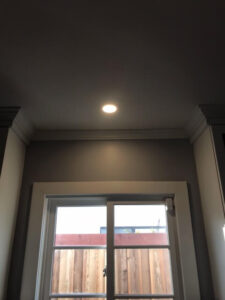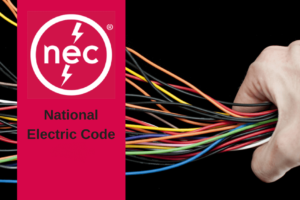For Southern California homeowners, the demand for electricity efficiency can be exceptionally high at times. With consistently hot temperatures, almost every Californian is forced to run their air conditioners to the max, leading to periods of power surges.
State power suppliers and utilities have a hard time keeping up with the demand, which can lead to temporary outages and even rolling blackouts. Power surges and blackouts in your So. Cal home can cause pricey damages to electronic devices and appliances, so here are some useful tips to combat these power outages in the best way possible.
Pull The Plug
The first thing every Southern California homeowner should do when combatting a power outage is to pull the plug on all of their appliances. It’s essential to unplug any appliances with electronic components, such as televisions, computers and microwaves.
- This action will help to avoid any damage to your appliances from voltage surges after the electricity is restored.
Wait a few minutes before turning on these appliances. When the electricity is restored, turn them on one at a time.
- This will help minimize the demand on the power supplier’s electrical grid.
Unless you have a whole-home surge protection system or individual surge protectors all over your house, some of your plugged-in devices are probably vulnerable to surge damage. It doesn’t take a huge surge from a lightning strike or a transformer explosion to damage your appliances. Small surges commonly occur when other large appliances in your home turn on, for example, your refrigerator’s compressor or your air conditioning. Over a period of time, these small surges can gradually wear away at other appliances on the same circuit, shortening their lifespans.
Utilize Surge Protectors
One of the easiest and least expensive ways to deal with power surges at home is to plug expensive TVs, computers and appliances into a surge protector. While they won’t provide protection from the millions of volts resulting from lightning strikes, these specialized power strips can provide protection against the built up damage from lower voltage surges. Ultimately, a surge protector evens out the sudden peaks of electricity, thus protecting your electronic devices against random power spike damage.
Having a surge protector isn’t enough to protect your appliances from harm. It’s important to find one that suits the needs of your specific items. Identifying the type and value of the equipment being cared for will help you determine the amount of surge protection you need. Surge protectors offer protection in joules; the joule rating refers to the maximum amount of energy it can absorb before it fails. Obviously, the higher the joule rating, the more energy the protector can absorb. For the most protection possible, consider acquiring a surge protector with a joule rating of at least 600. Gain peace of mind by using surge protectors on your most essential appliances and devices.
Invest In A Generator
Depending on the severity of the outage or experience with outages in the past, every Southern California homeowner should consider buying a home generator. A home generator can serve as a backup to the municipal power grid providing your electric functions.
- They can cater to the home’s electrical needs when faced with an extended blackout that lasts for days at a time.
If rolling blackouts have taught Californians one thing, it’s that having an extra power source is crucial during tough times.
It’s critical for Southern California homeowners to consider which home generator is right for their property’s past experiences. For longer, rolling blackouts, standby generators are the way to go. Although they are more expensive, they cover more major appliances like your refrigerator. Portable generators are another great option for someone with a limited budget, who needs smaller devices powered for the time being. If you do find yourself with a narrow budget, try using your home’s equity to fund your new generator purchase. A home equity loan can provide funding in a lump sum with a lower interest rate than that of a personal loan or credit card. Take control of your power by investing in a generator that is best suited for your home.
Establish An Emergency Plan
When a power outage occurs, it’s important to relax and assess the situation. Having an emergency plan is essential for the safety of your home and your family. If you have a pet or younger child, make them a priority in this situation. If it’s dark, gather your family members and bring them together to distribute emergency lighting tools. Try using your cellphone’s light to prevent injuries when navigating your home.
- Then, check that your flashlights are operational and replace their batteries if needed. Also, analyze your power banks and charging cables to make sure they are ready for use.
- If it’s still light out, strategically place battery-powered lights or candles in the most commonly used rooms so they are spread out if the blackout continues later into the night.
Depending on the severity of the outage, each requires some sort of emergency kit. There are a number of things to consider when creating an emergency kit for your entire family. Having enough water available to last several days is significant in these types of situations. Your kit should also include other essential items like non-perishable foods, portable power devices, hand or solar-powered communication tools, and a first aid kit. For entertainment purposes, this kit could also include things like books, board games, and even puzzles. Try being as prepared as possible when an energy disruption arises.
Conclusion
There are a variety of ways for California homeowners to be proactive when dealing with potential outages or existing blackouts. Use your local resources for help as utility companies in your area should assist you when trying to find information surrounding potential disruptions. Being proactive, prepared, and aware of potential threats is the best way to combat potential power outages in Southern California.
 When everyone thinks of their dream house, there’s almost always a pool. Most people want a pool in their house, and so if you’re planning to have one installed, welcome to the club!
When everyone thinks of their dream house, there’s almost always a pool. Most people want a pool in their house, and so if you’re planning to have one installed, welcome to the club!






 Electricity is dangerous and a lot of precaution is necessary when you work around it all the time. This raises the concern for electricians and how they manage to not get electrocuted. We know there are many things they know that everyone else doesn’t, but is that all?
Electricity is dangerous and a lot of precaution is necessary when you work around it all the time. This raises the concern for electricians and how they manage to not get electrocuted. We know there are many things they know that everyone else doesn’t, but is that all?
 As a homeowner, every spring, there are certain aspects of your property that are crucial to maintain along with your daily tasks. A main aspect of springtime preparedness is to maintain your electricity and safety standards to keep your family safe. Use these three spring electrical tips from
As a homeowner, every spring, there are certain aspects of your property that are crucial to maintain along with your daily tasks. A main aspect of springtime preparedness is to maintain your electricity and safety standards to keep your family safe. Use these three spring electrical tips from 
 If you just got a Nissan Leaf or are planning to get one, one of the many questions you probably have is whether you can
If you just got a Nissan Leaf or are planning to get one, one of the many questions you probably have is whether you can 



 There is nothing scarier than hearing your fire alarm go off in the middle of the night. You get worried that you left the fire on, or your kids forgot to put off the stove. You might eventually realize nothing that can start a fire is on, but the chirping sound persists.
There is nothing scarier than hearing your fire alarm go off in the middle of the night. You get worried that you left the fire on, or your kids forgot to put off the stove. You might eventually realize nothing that can start a fire is on, but the chirping sound persists.


 Fixing
Fixing 
 Power surges are almost a given, even in Southern California. One minute you could be watching the TV, and the next, your home gets struck by lightning. Before you know it, the power surge is burning expensive electronics like your refrigerators, dryers, washers, computers, and your beloved TV. A power surge is usually a result of things like storms, downed power lines, or lightning and could be prevented using
Power surges are almost a given, even in Southern California. One minute you could be watching the TV, and the next, your home gets struck by lightning. Before you know it, the power surge is burning expensive electronics like your refrigerators, dryers, washers, computers, and your beloved TV. A power surge is usually a result of things like storms, downed power lines, or lightning and could be prevented using